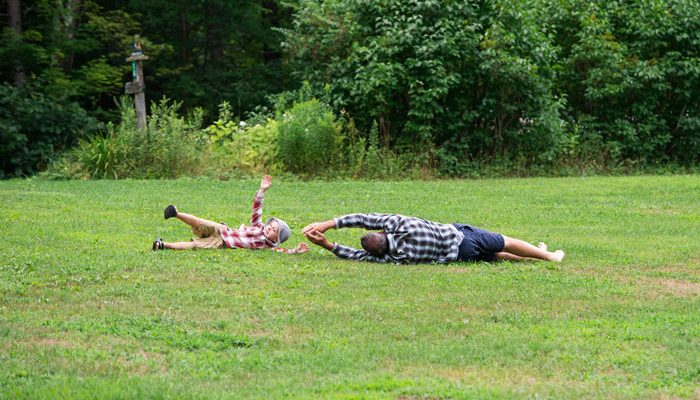
yoU aRe the fertilizers and pesticides you use.

There’s something about a green lawn. It has an alluring, sort of hypnotic quality about it. Transfixed by its color, texture and the way the light bounces off each blade, we humans can gaze at it for hours on end. And, oh, the smell of freshly cut grass: it lingers in our senses, a reminder that today is a warm day, a carefree, grass-mowing day, a day for our kids to play tag and for our dogs to fetch a ball.
On weekends, we watch our kids tackle each other on the local town fields. In the afternoon, Mom kneels in her flowerbeds, working busily away. Dad comes in from his lawn work, and the kids run to hug his legs. Then everyone claims a spot on the couch, including the dog.
But this scenario isn’t all a bed of roses. Because, as we observe, one kid’s nose is running, Mom has a cough, Dad is feeling light-headed and the dog’s developed another one of those growths.
It’s likely that chemical exposures are the culprit.
National studies indicate that three million tons of inorganic fertilizer and more than a billion pounds of pesticides are used annually in the United States. They’ve been linked to cancer, birth defects, reproductive effects, neurotoxicity, disruption of the endocrine (hormonal) system and attention-deficit/hyperactivity disorder (ADHD) in children.
And it’s not just our immediate environments that are affected; fertilizer and pesticides sprayed on lawns and fields run off into our streams, rivers and lakes causing algae to grow, which in turn depletes the oxygen in the water and ultimately creates “dead zones.” We saw this in a massive area off the coast of Florida last year, when the red tide killed hundreds of thousands of pounds of sea life.
Possibly, this addiction we’ve got to green, manicured lawns and fields is one we should break – and can break. But how? And what can we do?
One way is to plant grass that’s native to your area. Test your soil and aerate every spring. Once a year, use organic fertilizers and pesticides with compost or organic topsoil, raking it into the grass. Add pH adjusters, if necessary. Use less of whatever you do choose to use, treat your lawn after a rain, and make sure to keep your lawn free of pet waste, as that can cause toxic run-off as well.
 I haven’t used a fertilizer or a pesticide on my lawn in years, and it still hypnotizes me when I look out over a sea of dandelions or curl my toes around a patch of clover. Every year, my grandson and his granddad have a little competition where they roll down our hill. It’s quite the scene, both with their arms stretched out above their heads turning over and over in the grass. I get a kick out of watching them, especially knowing that they aren’t rolling around in chemicals.
I haven’t used a fertilizer or a pesticide on my lawn in years, and it still hypnotizes me when I look out over a sea of dandelions or curl my toes around a patch of clover. Every year, my grandson and his granddad have a little competition where they roll down our hill. It’s quite the scene, both with their arms stretched out above their heads turning over and over in the grass. I get a kick out of watching them, especially knowing that they aren’t rolling around in chemicals.
